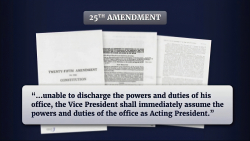These battleships were among the finest ever engineered—and are rightly sources of great national pride from an otherwise bleak era in French history.
Entering the Second World War, it was assumed that France’s military would be a serious challenger to Adolf Hitler’s Germany. Indeed, when Hitler ordered his generals to invade France, the orders issued by the Wehrmacht High Command to their invasion forces were so equivocating it would have confused even the savviest frontline soldier. That’s because the German military elite feared the French military—or at least its legacy.
In the interwar years, the French military had struggled to restore its martial prowess lost in the killing fields of the First World War. In a sense, the Maginot Line was created by the French so that Paris’ leaders could have their cake and eat it, too. The French people were weary of war—understandably so, given the vast losses France sustained in the First World War. Yet French leaders were keenly aware of the threat that Germany’s rearmament posed to them. So, French leaders envisioned a purely defensive strategy—the Maginot Line—based upon the assumptions and experiences of the previous war.
France’s Battleships: A Maginot Line at Sea?
There was also a Maginot Line of sorts created by the French at sea, in the form of its interwar fleet—notably the creation of the Richelieu-class battleships. Most naval historians believe the Richelieu-class battleships represented the height of French naval engineering for that era.
Designed in the 1930s to counter the growing threat of Italian and German naval expansion, these fast battleships were the largest warships ever built by France, embodying a blend of innovative design, formidable firepower, and complex wartime legacy.
The Richelieu-class battleships emerged from a period of intense naval competition and treaty-imposed constraints. The 1922 Washington Naval Treaty and the 1930 London Naval Treaty limited overall battleship construction, allocating France and Italy a combined tonnage of 70,000 long tons for new battleships to replace existing, aging fleets. France was heavily reliant on its African colonies and was seriously concerned about Italian ambitions in the Mediterranean. Thus, there was real pressure to modernize its navy.
Paris ordered the construction of the Dunkerque-class battleships in response to Germany’s Deutschland-class cruisers. As Germany’s Kriegsmarine worked to compete with the British Royal Navy, developing the massive Schamhorst and Bismarck-class battleships, France feared it was being left behind.
When Italy announced the construction of the Littorio-class battleships in 1934, however, France responded with the Richelieu-class. A year after Italy’s Littorio-class battleships came online, the Richelieu-class battleship was launched by France to maintain naval parity in the Mediterranean.
The Richelieu-class battleship’s design was a direct evolution of the Dunkurque-class, scaled to accommodate greater firepower and armor while adhering to the limits of the Washington Treaty. France’s construction of the initial two Richelieu-class battleships, the Richelieu and the Jean Bart, actually violated the treaty’s limits—a move that France justified as a response to Britain’s 1935 Anglo-German Agreement, which loosened restrictions on German naval expansion.
As an interesting side note here, as Paul Johnson documents in his magisterial book, A History of the Modern Times, British military strategists of the interwar period were more worried about a return of French military power post-WWI than they were of the Germans. The strategists in London wanted to use the fear of a rearming Germany to counter what they worried was a resurgent, potentially hostile France.
The Richelieu-Class Was a Triumph of French Engineering Excellence
The Richelieu-class battleships were a true triumph of French naval architecture, balancing speed, firepower, and protection in a design constrained by treaty limits and national priorities. Their most distinctive feature was the main battery: eight 15-inch (380 mm) guns mounted in two quadruple turrets, positioned forward, all in a superfiring arrangement.
This layout, inherited from the Dunkerque-class, minimized the length of the armored belt, reducing weight while allowing all guns to fire forward, presenting a smaller target silhouette during head-on engagements.
To enhance survivability, each turret was divided by a 45mm bulkhead, creating two independent compartments, each with its own magazine, ensuring that a single hit would not disable the entire turret.
The choice of quadruple turrets, though, had plenty of complications. The guns were mounted in pairs within each half-turret, and their close proximity caused excessive shell dispersion during simultaneous firing, a problem not fully resolved until 1948. Despite this, the 15-inch guns were powerful—so much so that, during Richelieu’s 1943 refit in the United States, they were rebored to 381mm to accept British shells, enhancing interoperability between the Allied navies.
During the 1943 refit, the Americans added 20mm Oerlikon and 40mm Bofors guns, along with radar and improved fire-control systems, aligning with US Navy standards. These additions were made to address the initial anti-aircraft system’s weakness. The original AA systems relied on optical fire control rather than radar, as well as a secondary armament of nine 152mm guns in three triple turrets aft—which were less effective against attacking aircraft.
Armor protection was another strength of the Richelieu-class. The main belt was 330mm thick, and the upper armored deck was 160mm, providing robust defense against high-caliber shells. The ships’ underwater protection was among the best of their era, surpassing even the German Bismarck-class, with a layered system designed to absorb torpedo and mine impacts.
Propulsion of the Richelieu-class battleships was equally impressive. New, compact boilers ensured a top speed of 37 miles per hour, making the class true fast battleships capable of outrunning nearly all contemporaries.
The Richelieu Never Fought Germany
France officially surrendered to the invading Nazi armies in 1940. To avoid capture, the namesake of her class, the battleship Richelieu, sailed from Brest to Dakar in French West Africa on June 18 of that year, escorted by destroyers. Her sister ship, the Jean Bart, only 77 percent complete, fled from Saint-Nazaire to Casablanca. Both ships came under Vichy French control—creating a massive strategic dilemma for the Allies, who feared their potential use by Germany.
In July 1940, during Operation Catapult, British forces attacked the Richelieu at Dakar to prevent her from falling into German hands. Swordfish torpedo bombers from the HMS Hermes damaged Richelieu’s starboard shaft, and in September, Richelieu engaged the British battleship HMS Barham during a failed Free French attempt to seize Dakar, sustaining two hits and disabling two guns due to blowback. Jean Bart, anchored in Casablanca, was heavily damaged by US forces during Operation Torch in November 1942.
After Vichy forces in North Africa joined the Allies in 1942, Richelieu sailed to the United States for a major refit in 1943. From there, she went on to serve the British Eastern Fleet, escorting carriers and bombarding Japanese positions in the Indian Ocean and Southeast Asia. The Richelieu played a decisive role in liberating Singapore in September 1945 and supported French efforts to reassert control over Indochina, though she was damaged by a magnetic mine in the Strait of Malacca.
The Richelieu’s Postwar Service
Richelieu saw limited active service, serving as a gunnery training ship from 1952 and as a stationary barracks ship from 1956 until her scrapping in 1968. Jean Bart remained incomplete until 1955, when she was fully commissioned in the French Navy. The Jean Bart did, however, take part in the 1956 Suez Crisis, firing on Egyptian shore targets. She was ultimately placed in reserve in 1957 and scrapped in 1970.
All in all, the French built an excellent battleship. It’s just too bad for the French that Paris surrendered to the German invaders when they did. Because of this, the Richelieu-class battleship was never really able to prove itself. Still, these battleships were among the finest ever engineered—and are rightly sources of great national pride from an otherwise bleak era in French history.
About the Author: Brandon J. Weichert
Brandon J. Weichert, a Senior National Security Editor at The National Interest as well as a contributor at Popular Mechanics, who consults regularly with various government institutions and private organizations on geopolitical issues. Weichert’s writings have appeared in multiple publications, including the Washington Times, National Review, The American Spectator, MSN, the Asia Times, and countless others. His books include Winning Space: How America Remains a Superpower, Biohacked: China’s Race to Control Life, and The Shadow War: Iran’s Quest for Supremacy. His newest book, A Disaster of Our Own Making: How the West Lost Ukraine is available for purchase wherever books are sold. He can be followed via Twitter @WeTheBrandon.
Image: Wikimedia Commons.
















